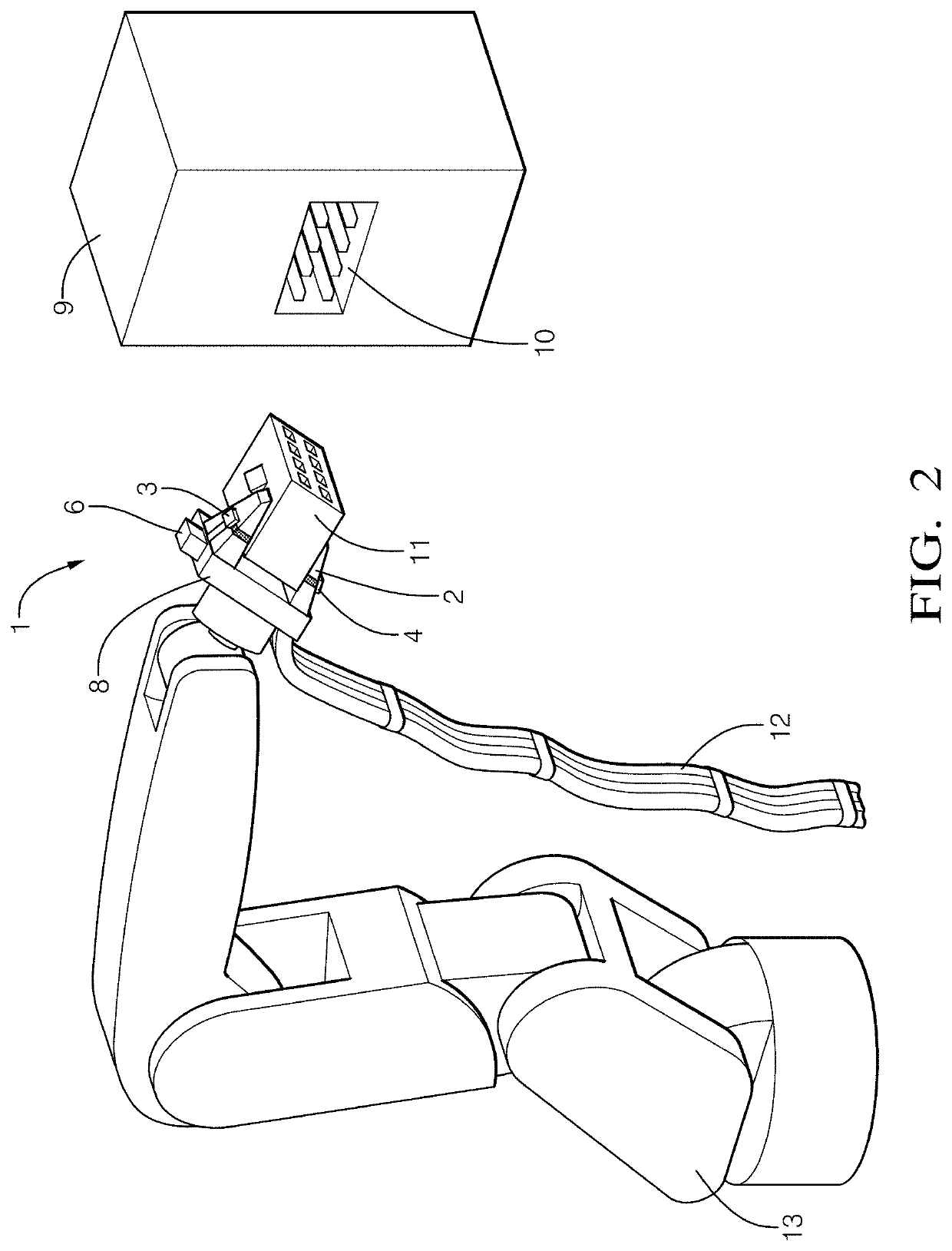Component Connection Verification Device and Method
a technology of component connection and verification device, which is applied in the direction of coupling device connection, transportation and packaging, instruments, etc., can solve the problems of reducing the overall reliability of the system, circuitry not functioning properly, and difficulty in ensuring the correct connection of components, so as to monitor the accuracy of the user or the robotic system affecting the connection
- Summary
- Abstract
- Description
- Claims
- Application Information
AI Technical Summary
Benefits of technology
Problems solved by technology
Method used
Image
Examples
first embodiment
[0029]FIG. 1 shows a connection assurance device 1 according to a This embodiment the device is provided in the form of a wearable glove 2 to be worn by a user, such as a technician or assembly line employee working in an assembly plant.
[0030]The glove 2 is provided with a controller 6 at the cuff of the device, which is connected through connecting wires 5 to a first microphone 3 and a second microphone 4. The first and second microphones 3, 4 are secured to the glove 2 at first and second locations, respectively. These locations are configured such that, when the user's gloved hand grips a component (not shown), the first and second microphones 3, 4 are brought into direct physical contact with the component. When the component is then fitted to its counterpart component, the sound vibrations from the connection are conducted through the component itself, as well as through the air. In other embodiments, other types of audio sensors may also be used, such as vibration sensors. Fu...
second embodiment
[0038]FIG. 2 shows a connection assurance device 1 according to a In this embodiment, the device 1 is provided in the form of an attachable harness 2 (similar to the glove 2 in FIG. 1) to be fitted to a gripper 8 provided on the distal end of the arm of a production line robot 13.
[0039]The device 1 is provided with first and second microphones 3, 4 that are respectively secured to each finger of the gripper 8 using the attachable harness 2 (e.g., fixture straps). The first and second microphones 3, 4 are connected to the controller 6 by wires 5.
[0040]FIG. 2 further shows the gripper 8 holding the terminal connector 11 of a wire harness for connection into connection port or socket 10 provided in assembly 9. The terminal connector 11 is fed by a bound trunk of cables 12, and the top panel of the connector's housing comprises a latch which engages into a recess formed in the housing of the connection socket 10. The connection socket 10 comprises a plurality of pins which are received...
PUM
 Login to View More
Login to View More Abstract
Description
Claims
Application Information
 Login to View More
Login to View More - R&D
- Intellectual Property
- Life Sciences
- Materials
- Tech Scout
- Unparalleled Data Quality
- Higher Quality Content
- 60% Fewer Hallucinations
Browse by: Latest US Patents, China's latest patents, Technical Efficacy Thesaurus, Application Domain, Technology Topic, Popular Technical Reports.
© 2025 PatSnap. All rights reserved.Legal|Privacy policy|Modern Slavery Act Transparency Statement|Sitemap|About US| Contact US: help@patsnap.com


